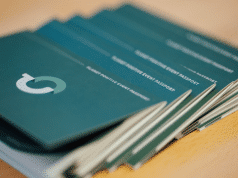DEFINITION
Event revenue is the convergence or merging of known methods of monetisation from live events and the new digital event ecosystem. Several new monetisation opportunities have arisen from the current digitalisation of events. The takeaway from the corona crisis is that event revenue has to be dispersed. It can be dispersed by understanding the value of our content and by using different communication platforms. Following this method, we will find countless new monetisation methods.
THE STARTING POINT
Event organisers have long been trying to find ways to monetise events. A whole host of articles delves into this topic. Unfortunately, such articles are often incomplete and, due to their generic structure, useless. However, common to all is the dilemma of whether live content is worth more than content offered online or through digital channels. Together with colleagues from the industry, we agree that the price of quality of live content is equal to that of digital platforms. From this standpoint, we have at our disposal several forms of monetisation, depending on the level of participant engagement. In this chapter, we will present several examples and models.
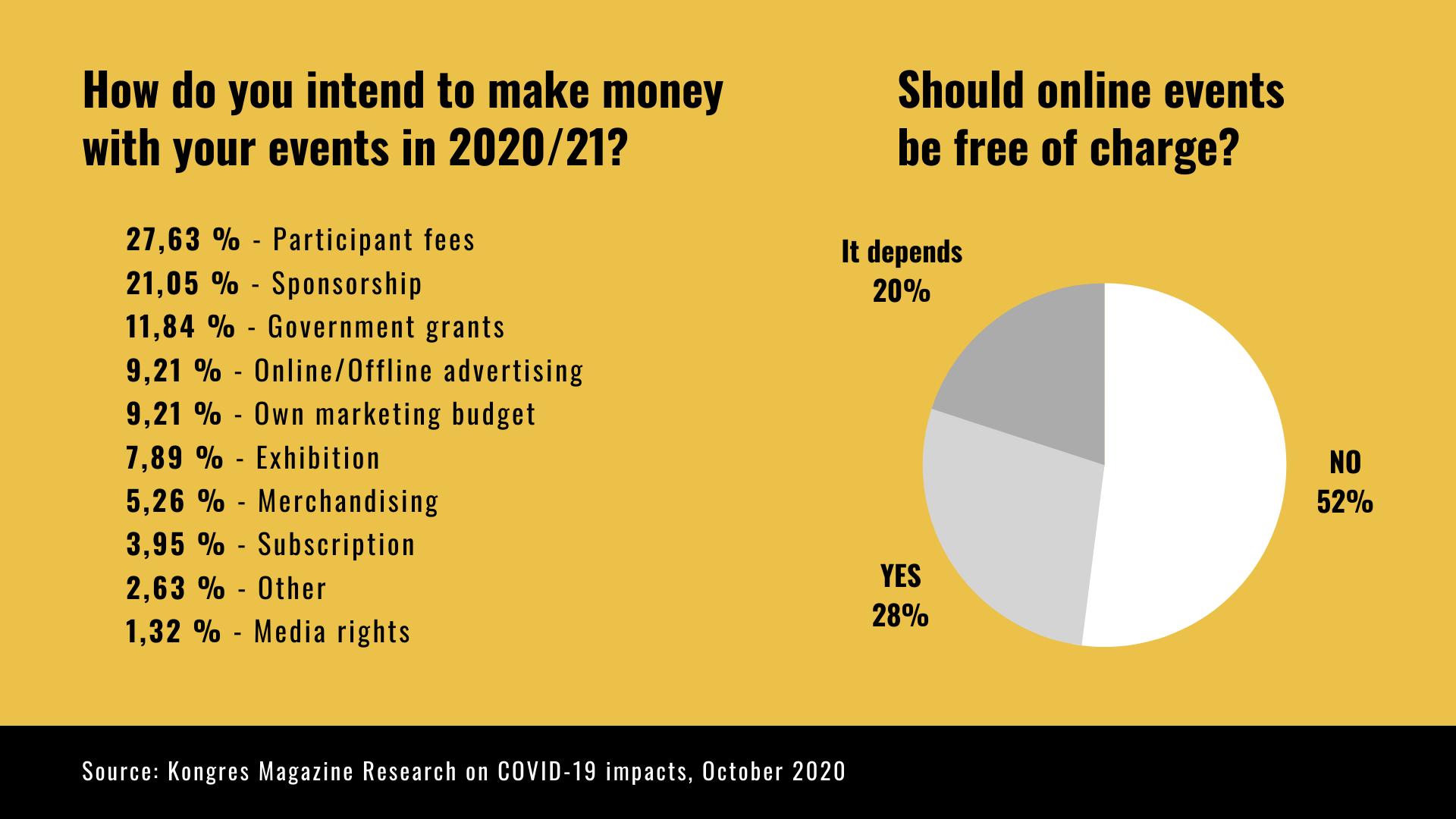
THE CONCEPT
The monetisation of events should primarily start with the question of what creates the EVENT VALUE. Based on our experience, we have divided the segments as follows:
1. EVENT CONTENT
CONTEXTUAL VALUE
The value of an event depends on the content and its use in particular circumstances and communication channels.
REDISTRIBUTION VALUE
Event value defines the possibility of redistributing content, its re-use and multiplication through remarketing.
INTERACTIVITY
An event must enable active participation and interactive learning. Interactivity takes place with the help of different platforms. The possibility of repackaging content for different platforms creates value and represents a great advantage.
2. EVENT REACH
PHYSICAL reach
The most common criteria for evaluating reach has become irrelevant due to the corona crisis. In the era of hybrid events, the reach of events has increased, yet the participants’ structure remains crucial.
DIGITAL reach
Event participants can access content through a variety of digital channels. Hence, the TURF (Total Unduplicated Reach) of an event is important.
KEYWORDS
The value of keywords connected to an event is often overlooked. Keywords and collocations positioned high will undoubtedly increase an event’s value.
3. EVENT INFLUENCE
PERCEPTION
The perception of an event brand gives life to different forms of co-branding. It is a value that is hard to measure but is equal to, if not more important than, other segments. The synergy, in this case, is in building trust and loyalty.
INFLUENCER VALUE
It is often only possible to meet influencers at events. Thus, the added value that the cooperation of influencers brings to an event cannot be underestimated.
NETWORKING
For many, the possibility of having people-to-people conversations with colleagues and of presenting novelties and ideas to them is priceless. The difference is made by the meeting planners, who know how to organise networking in such a way that you can be sure of meeting potential clients or future business partners. Events must not be a waste of time.

TIPS AND TOOLS
For quite some time now, the mentality has been that (live) marketing via events brings high ROI. The corona crisis has turned this belief upside down. The reason lies in the flood of free events changing and impacting the value of events to a certain extent. Free of charge often translates into less worthy. As an industry, we must prove ourselves and convince stakeholders of the power of people-to-people events. In this new reality, we have not yet developed monetisation models. Nevertheless, we have a powerful tool in our hands: specific target groups that we connect at our events. Meeting planners can easily prove their added value in this area, and I am convinced that the golden era of our industry is just starting. In the following chapters, we have listed a few key possibilities for monetisation, enabling the making of sponsorships or partnership deals.
EVENT CONTENT AND PROGRAMME
SPONSORED SPEAKERS
A well-known method from classic events, the use of sponsored speakers works perfectly in both the online and hybrid worlds. Two aspects are crucial. Such presentations should be clearly branded and communicated throughout. In the same breath, the speakers must be professional and their qualities tested.
Monetisation: Sponsored speakers
VOD/VIDEO ON DEMAND
Online video libraries are another opportunity for event monetisation. From experience, I can confirm that they are among the most effective. Visualisation, in particular, is suitable for selling and advertising a product, service or offer. The logical partners of VOD are webinars.
Monetisation: Video libraries of partners (video on demand)
SPONSORED WEBINARS
Content-wise, sponsored webinars can be a great addition to an event, in particular when it comes to presenting relevant and useful content.
Monetisation: Sponsored webinars
HAPPY HOURS
Online versions of happy hours have become increasingly popular, as they can make direct contact with participants with a trademark. The application of this can be achieved by implementing live music, cooking classes, cocktail-making sessions or health and well-being activities.
Monetisation: All types of online parties
WEBPAGES
DIGITAL PARTNERS’ PROFILES
If you have not yet done it, digital partners’ presentations are an essential monetisation tool. There is a sea of options when it comes to this, but the most favourable are video formats.
Monetisation: Preferred partner profile
DIGITAL PARTNERS GROUPS
Partner groups should be sorted into segments and product catalogues. If you can connect this with keywords and key phrases, you can develop a very effective marketing system.
Monetisation: Product catalogue
SPONSOR/PARTNER WIDGETS
There are a variety of different options for presenting partners with the help of widgets accessible from the front page of an event’s website. Adaptations help to create a connection with the partner’s digital profile, etc. It is important to choose partners that are relevant to your focus group.
Monetisation: Onsite retargeting (pop-up cards, push-up notifications)
VIRTUAL FAIRS/EXHIBITIONS
The approach here is similar to classic exhibitions. The difference is that the stand is virtual and the contact between exhibitors is established via online platforms. This can be integrated with the digital profiles of partners and groups and widgets on the front page.
Monetisation: Virtual exhibition stands
PARTNER MICROSITE
Microsites take advantage of an event’s reach. Partners can be presented in all their glory in all digital formats on a microsite. Methodologically speaking, this approach is particularly effective in combination with video-conferencing platforms.
Monetisation: Event microsites
ONLINE GAMIFICATION
We employ various forms of gamification to encourage participants to meet sponsors in an entertaining manner. The vast majority of gamification is for encouraging visits to websites, microsites or virtual stands.
Monetisation: Prize quiz
CHATBOTS
Chatbots are becoming increasingly popular. However, we do warn of the complexity of their use, primarily when it comes to predicting communication scenarios and when this has to be aligned and adapted with the values and virtues of a specific trademark.
Monetisation: Chatbot sponsorship
SOCIAL NETWORKS
SOCIAL MEDIA CO-BRANDING
This segment can be organised on the level of simple branding and all the way to complex activations in the form of gamification. In this context, it is important to understand the FOMO (fear of missing out) effect propelling this sort of monetisation.
Monetisation: Live sponsored posting, hashtag marketing, video content
SURVEYS/POLLS SPONSORSHIP
Co-branding of research and surveys is a common form of monetisation. Different polls connecting the values of a brand and an event present an opportunity to expand the possibilities.
Monetisation: Polls and surveys sponsorship
SOCIAL MEDIA INTERVIEWS
Interviews with representatives of companies featured on social media (mostly Facebook, Twitter, LinkedIn) are also a form of monetisation. Often, content can be redistributed, even in the form of video on demand.
Monetisation: Sponsored interviews
SOCIAL MEDIA GAMING
Games that are otherwise very popular on social media platforms can become a part of your event. Although they demand investment into the development of the game, the result will be crafted to the needs of your event. In this area, Facebook offers the most solutions.
Monetisation: Social gaming
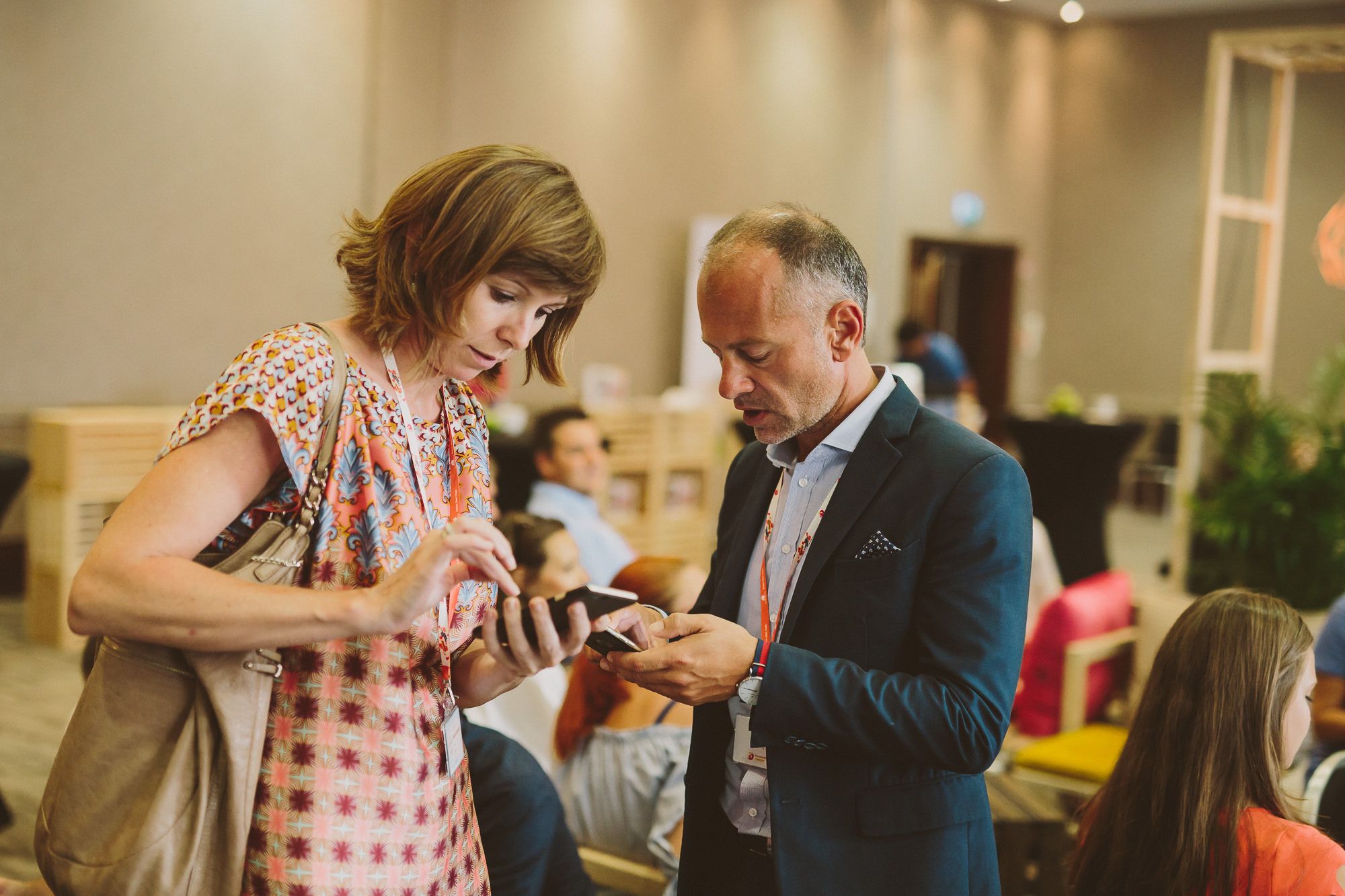
DIRECT MARKETING
CO-BRANDING OF DIRECT MAILS
Direct mailings or e-newsletters are an important part of communicating with focus groups. This form of co-branding is a goldmine of monetisation opportunities.
Monetisation: Co-branding confirmation, reminders and mail feedback
VIRTUAL GIVEAWAYS
There is hardly a more popular way of sponsorship when it comes to participant engagement than virtual giveaways. Well-thought-out activation and implementation of such a strategy go a long way. The gift can be a report, research, e-book, access to photo libraries, etc.
Monetisation: Virtual goody bag
CARE PACKAGES
Another generally practised form of engagement is care packages which, in cooperation with sponsors, should be sent to the participants beforehand. Such a method has been proven effective.
Monetisation: Sponsorship of care packages
MATCHMAKING
ONLINE SHOPS
If an event is particularly sales-oriented, one solution is to establish a virtual shop. A product launch is a typical event where establishing an online market is logical and allows sponsors to get involved.
Monetisation: Online shop sponsorship
AI-POWERED MATCHMAKING
Online matchmaking at events enables a very focused promotion. After the process of collecting and filtering data about the participants, we then showcase ads and content that is relevant to them. By doing so, we create a powerful analytical tool for our partners, but unfortunately, this form of matchmaking is relatively rarely used in the events industry.
Monetisation: Native advertising
SPEED MATCHMAKING
Online speed matchmaking is similar to an online dating system. It has become particularly popular during the corona crisis, as almost any video conference platform enables its use. At the same time, it offers an opportunity for sponsorships.
Monetisation: Speed dating sponsorship
LIVE STREAMING
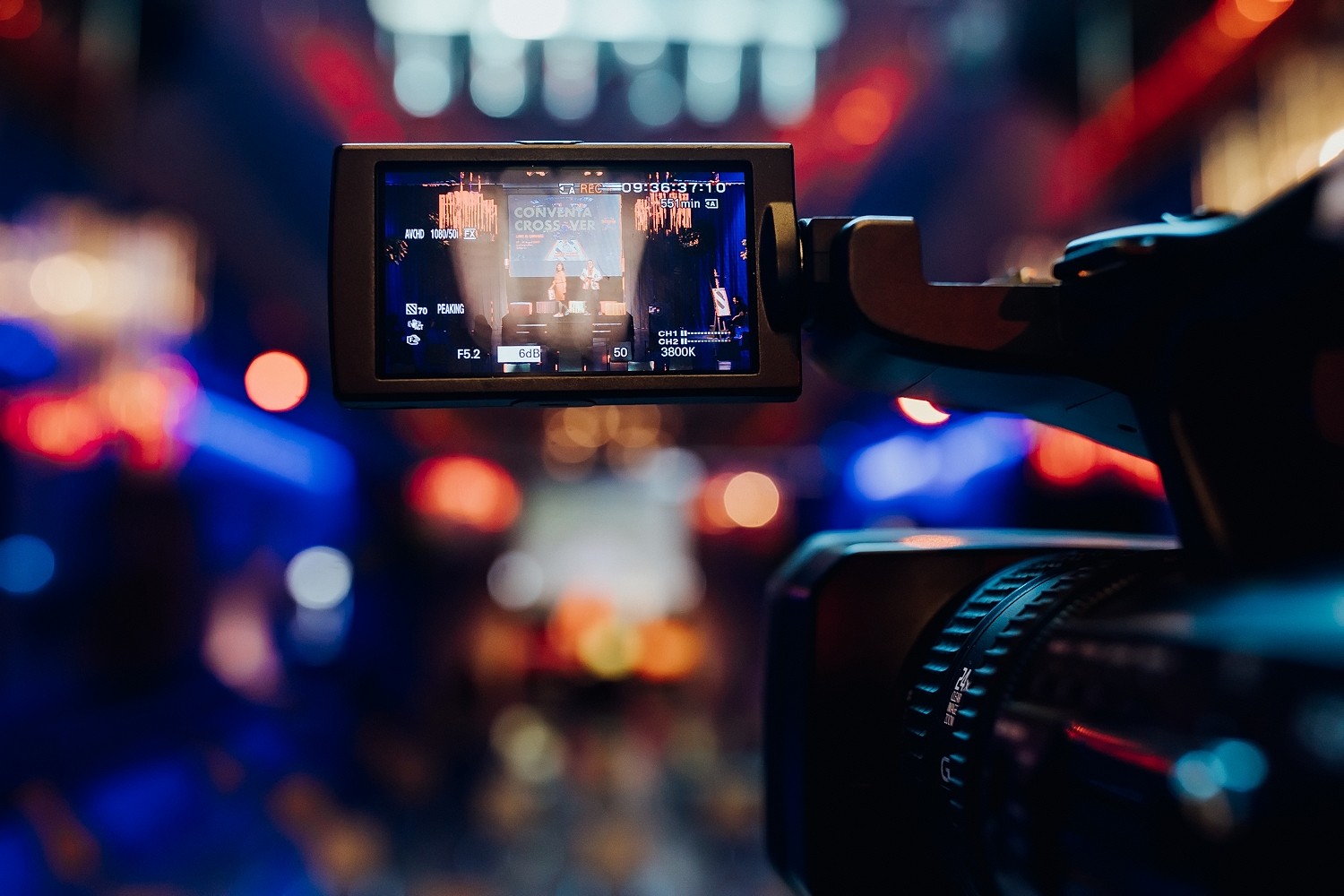
LIVESTREAM BRANDING
With live streaming, we profoundly increase the reach of events. A live stream can also be a source of income with the help of branding, which generally takes place on video conference platforms.
Monetisation: Branding of a live stream channel
VIDEO ADS 10–20 sec.
Short video ads are certainly favoured at online and hybrid events. Nonetheless, they must be very short, professionally made and effective.
Monetisation: Video ads
TRANSITION SLIDES
Because the production of dynamic online events is similar to TV production, it is possible to brand a series of graphic elements and infographics to connect individual elements of an event. With this comes high visibility, notably on the main stage.
Monetisation: Slide ads
VISUAL SCRIBING
A popular way of summarising the action at virtual events is virtual scribing. Data visualisation with the help of caricaturists is television-like and informationally very effective.
Monetisation: Visual scribing sponsorship
TICKET SALES
Why did I save this part for the end? If you can attract an esteemed sponsor, the event can become a free one. There have been many such events during the corona crisis. Sponsors will have covered the ticket sales in this case. A similar model is based on acquiring new clients and expanding your database.
We have picked out a few typical examples based on good practice:
FREEmium business model, based on access to content:
FREE: Access to general content and interviews
EUR 65: Payable access to in-depth exclusive content
EUR 90: Payable access to in-depth exclusive content and reports
EUR 350: Payable access to all content and one-to-one networking
Pay per view: Price policy, based on individual content (micro billing):
FREE: 1 lecture
EUR 50: Content segment with 3 lectures (VOD)
EUR 90: Content segment with 5 lectures (VOD)
EUR 150: All content segments with full access to video on demand. In this case, the entire programme needs to be well organised, bringing us in return high income with the help of micro billing.
Note: All of the prices mentioned are solely for example and are not connected to an actual case study.
RECOMMENDATIONS
The KISS principle is key to monetisation success. Measuring the reach and added value of an event through all channels and various time periods is vital to this process. Netflix is a great source of inspiration. Only with good analysis can you attract sponsors, strategic partners and participants to an event. Usually, we measure click-thrust, participants’ log-ins, participants at live sessions, activities in the chatbox, hours of video content consumed, resources downloaded, sponsor interactions, completed searches, social media buzz and other KPIs. We recommend incorporating this data into a logical and understandable matrix.
We have gathered a few practical ideas and suggestions from various fields to help you with monetisation:
Discount policy: Discounts can be given to colleagues who will attend the event and give recommendations to others (each contact brings a certain percentage of discount).
Discount policy: Discount on recommendations made on social media (a bigger discount percentage for the number of posts)
Sales boost: 24-hour access to all content for a limited price after the event has ended. This way, the content is given value again.
Subscription: Yearly subscription for all content related to an event and event- content added throughout the year. The subscriptions can also be monthly, quarterly or half-yearly.
Company packages: Access to an event for a special price for several participants coming from the same company.
Security: The aspect of security and preventing possible hacking is just as important when it comes to monetisation. We can ensure participants’ security by allocating unique passwords. There will always be “parasites” who try to access content without having to pay.
INSPIRATION
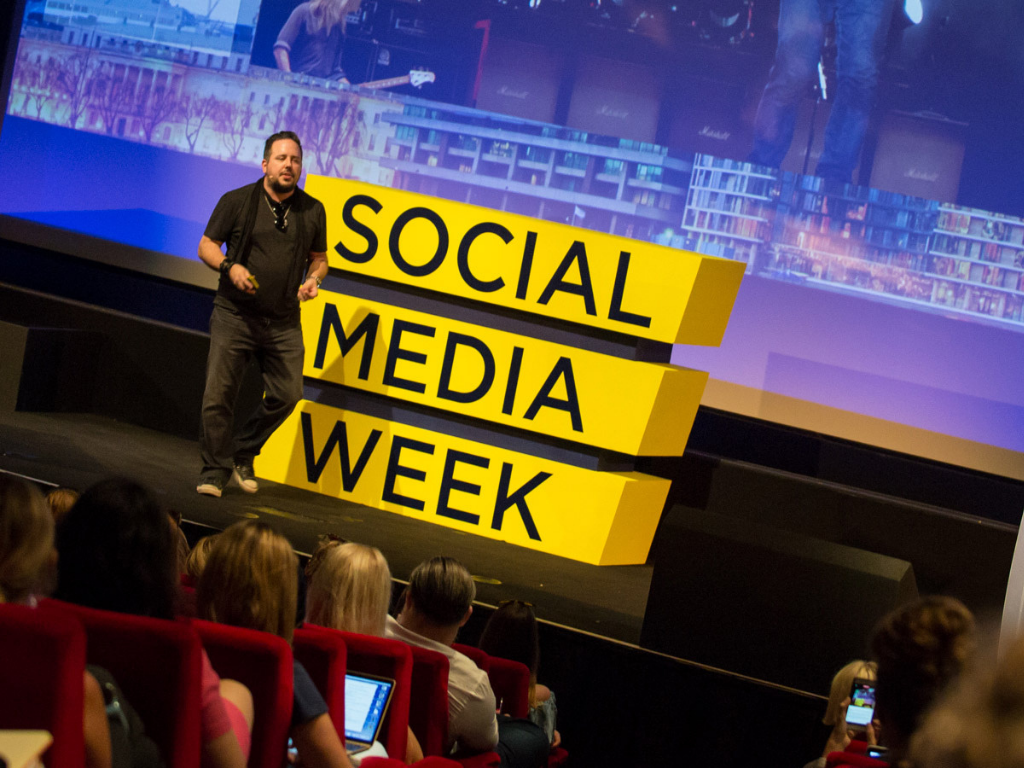
Monetisation is based on five pillars:
LEAD GENERATION – fill your sales pipeline with new, highly qualified leads
ON STAGE THOUGHT LEADERSHIP – shine the spotlight on your brand or solution
CURATED MEETINGS AND HIGH-LEVEL NETWORKING – Connect with 3,000+ decision-makers
BRAND AWARENESS – Make a lasting impression,
STRENGTHEN CUSTOMER RELATIONS – Meet your current and future client community
Above all, this is a brilliant example of balanced income-making through sponsorships, subscriptions and ticket sales.
We thoroughly recommend a visit to their website: www.socialmediaweek.org/conferences/sponsorship/




